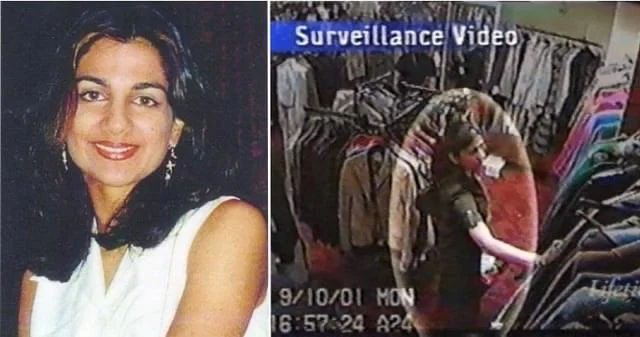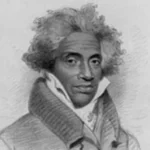Sneha Anne Philip, an Indian-American doctor living near the World Trade Center, vanished on September 10, 2001—just one day before the 9/11 attacks.
Early Life and Marriage
Sneha Anne Philip was born on October 7, 1969, in Kerala, India, to Ansu and Philip Kochiyil Philip. She grew up in upstate New York, first in Albany and later in Hopewell Junction, along with her two siblings.
After graduating from Johns Hopkins University in 1991, Sneha decided to become a doctor and enrolled in the Chicago School of Medicine in 1995.
It was there that she met Ron Lieberman, a fellow medical student from Los Angeles. They shared a deep bond and similar interests outside medicine. Ron loved music and Sneha was passionate about painting.
Sneha even took a year off to travel through Italy so they could graduate together. The couple moved to New York City afterward where both began medical internships. Sneha worked at Cabrini Medical Center while Ron worked at Jacobi Medical Center in the Bronx.
Their wedding took place in May 2000 in Dutchess County. The ceremony was small and mixed Jewish and Syrian Christian traditions. Ron gave Sneha a minnu, a gold teardrop pendant with a diamond—a symbol of love in Malayali weddings.
The newlyweds soon moved into a Battery Park apartment, excited to start their lives together.
The Last Day Seen
On September 10, 2001, Sneha had the day off. She planned to clean their apartment for a cousin’s upcoming visit.
During an online chat with her mother that afternoon, she mentioned wanting to visit Windows on the World, the restaurant atop the North Tower, where a friend planned to marry the following spring.
After 4 p.m., Sneha went out. She dropped clothes at a nearby dry cleaner and then went shopping at Century 21. Surveillance footage later showed her browsing the store, buying clothes, shoes and bed linens with her American Express card. These were the last confirmed moments of her life.
Ron returned home after midnight to find Sneha missing. He assumed she had stayed out, something she occasionally did. Around 4 a.m., a call was made from their home phone to Ron’s cell, though he couldn’t recall it. When he left for work at 6:30 a.m., Sneha still hadn’t come home.
Then came the morning of September 11. After the Twin Towers collapsed, Ron used his hospital ID to pass through the security zone and reach their apartment. Inside, everything was covered in dust from the explosions. Their cats had left paw prints in the gray film but there were no human footprints.
The Search Begins
Like many others, Ron and Sneha’s family posted missing person flyers across New York City. Her brother even told reporters—falsely—that he had spoken to her during the attack, hoping to gain attention for the case. But Sneha was the only person among the missing who wasn’t confirmed to be inside the towers.
Ron soon hired private investigator Ken Gallant, a former FBI agent, to look deeper. Gallant discovered two small clues suggesting Sneha might have returned home early on the morning of 9/11.
One was the 4 a.m. phone call from the apartment to Ron’s cell. The other was security footage from the building lobby showing a woman, dressed like Sneha, entering just minutes before the first plane struck.
Though the woman’s face wasn’t visible due to sunlight glare, her hair and clothes matched Sneha’s appearance from the previous evening. However, she wasn’t carrying any shopping bags. The image was unclear but Ron and the NYPD investigator believed it could have been her.
Gallant at first thought Sneha might have used the chaos of 9/11 to disappear and start over. But her passport, credit cards and glasses were all left behind.
Her American Express account was never used again. Eventually, both men concluded that Sneha likely saw the attacks unfolding and, being a doctor, ran to help victims—dying in the process.
The NYPD Investigation
When the NYPD finally began investigating, their findings painted a more complicated picture. Sneha had lost her hospital job at Cabrini Medical Center months earlier. Officials cited tardiness and alcohol issues but Sneha’s family claimed she was fired after complaining about racial and sexual bias.
Police also noted she had been arrested earlier that year after accusing a coworker of groping her at a bar. The charge was later changed to filing a false report which she refused to recant.
By September 10, she had a court appearance for that charge and pleaded not guilty. The NYPD claimed she and Ron had a loud fight afterward, though Ron denied this.
Sneha had since started working at St. Vincent’s Hospital but was struggling again—missing meetings and being suspended. Detectives also mentioned her frequent nights out at gay and lesbian bars where she sometimes stayed over with friends she met there. Her brother denied police claims that he ever caught Sneha in compromising situations.
The police report hinted that Sneha may have run away or met a tragic fate unrelated to 9/11. In 2004, she was removed from the official victims’ list.
The Fight for Recognition
Refusing to give up, Ron filed a petition in Surrogate’s Court in 2003 to have Sneha legally declared a victim of the attacks. Under New York law, the family needed “clear and convincing” evidence that she was exposed to deadly peril on 9/11.
Sneha’s mother testified about their chat, in which Sneha mentioned going near the World Trade Center. Even the NYPD investigator admitted he believed she probably died in the attacks.
But Judge Renee Roth ruled otherwise. On June 29, 2006, she set Sneha’s official date of death as September 10, 2004—three years after she went missing—citing lack of direct proof she was near the towers.
Her family appealed, pointing out another case: that of Juan Lafuente, a missing volunteer fire marshal who was declared a 9/11 victim based on even less evidence. They believed his case succeeded partly because his wife was the mayor of Poughkeepsie.
The 2008 Appeals Court Decision
On January 31, 2008, a New York State appeals court reversed the earlier decision. Judge David Saxe wrote that although no direct proof placed Sneha at Ground Zero, the “simplest explanation” was that she had died trying to help victims.
He stated, “Even without direct proof… the evidence shows it to be highly probable that she died that morning, and at that site.”
He also criticized the police report, calling parts of it hearsay and improperly introduced. The ruling made Sneha Anne Philip the 2,751st official victim of the Twin Towers’ collapse.
Because the Victim Compensation Fund had already closed, Ron didn’t receive financial aid but Sneha’s name could finally be engraved on the official memorials.
Her family buried an urn filled with Ground Zero ashes near their home in Poughkeepsie. Her mother, who works at Dutchess Community College, helped create a small memorial there too.
At the National September 11 Memorial, Sneha’s name appears on the South Pool, Panel S-66. Her parents kept her bedroom untouched, filled with her photos and diplomas. They no longer attend crowded memorial events, preferring to visit the site quietly on her birthday.
Ron eventually remarried in 2010—with her family’s blessing—but he still stays close to them. In Kerala, two memorial funds honor Sneha’s name: one helps poor patients near Aluva, and another supports medical projects through the Mar Thoma Doctors’ Association.Even today, no physical remains of Sneha have been found.
Her family hopes that one day her jewelry—especially her diamond-studded minnu—might be discovered among the recovered artifacts.
Sources
https://voicescenter.org/living-memorial/victim/dr-sneha-anne-philip
https://nymag.com/news/features/17336
https://abc7ny.com/post/dr-sneha-anne-philip-doctor-missing-on-911-september-11th-episode/12209285



